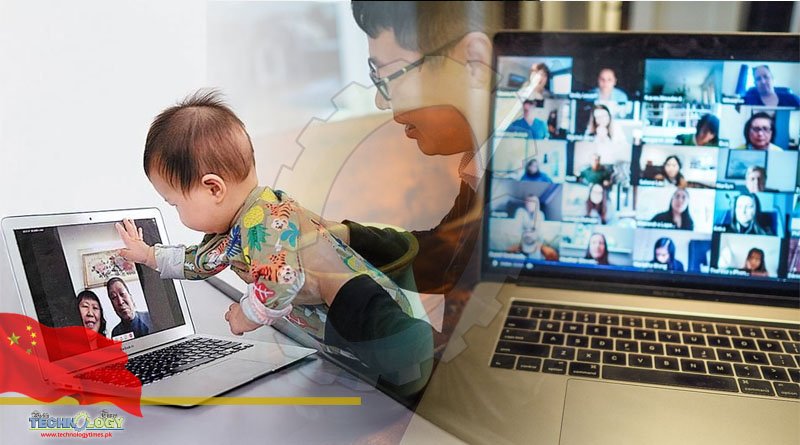When physical contact and meetings are impossible, either through distance or health measures, then seeing family via digital devices like mobile phones and video calls tactile is the next best thing.

When physical contact and meetings are impossible, either through distance or health measures, then seeing family, friends and colleagues via digital devices like mobile phones and video calls is the next best thing.
It is, however, far from perfect, not least because the sense of touch is missing. A Chinese scientist is now working to ensure that hugging loved ones that are far away may one day be possible, adding a tactile dimension to the video calls we have all become used to making.
Hou Zhanwei is hoping to develop a way of allowing users to experience touch over the
internet one day.
The International Telecommunication Union, based in Geneva, Switzerland, describes this technology as the “tactile internet”, a network that combines ultra-low latency with extremely high availability, reliability and security.
Latency, in computing terms, is the delay between a user’s action and the time it takes to be transmitted or reproduced.
The 33-year-old scientist, born in Zhangjiakou, North China’s Hebei province, became a researcher specialising in electrical and information engineering at the University of Sydney’s Centre for Internet of Things and Telecommunications in 2019.
Hou got his bachelor’s degree in electrical engineering from Sun Yat-sen University in Guangzhou, China in 2011.
After that, he obtained a master’s degree from the Institute of Computing Technology at the Chinese Academy of Sciences.
In 2015, he went to the University of Sydney to pursue a PhD and continued to work there as a postdoctoral researcher.
In October, Hou’s wife gave birth to a little boy in Sydney. However, Hou’s parents live in China, and precautionary measures against the ongoing Covid-19 pandemic made visiting their grandson in person practically impossible.
“Due to worldwide travel bans and closed borders, my parents in China have never had the opportunity to cuddle or hold their only grandchild, which has been difficult for all of us,” Hou says.
“Although our family communicates via video call and we update my parents regularly with photos of our son, what they want more than anything is to pinch his chubby arms and lull him to sleep.”
That is why Hou is dedicated to the research of a viable tactile internet that could also have more promising applications, such as helping consumers feel a fabric when online shopping, conducting emergency repairs in automated factories, diagnosing a medical condition of a remote patient or even working on spacecraft and orbiting infrastructure from right here on Earth, he says.
“My collaborators and I are developing a low latency communication technology which we hope will get us closer to developing a method to allow geographically separated families to ‘touch’ over the internet,” Hou says.
For a person to touch something or someone remotely using the tactile internet, the user would wear a highly sensitive glove, or other type of device, which can render the sense of touch and transfer that sensation to the user.
At the other end, an actuator device, such as a robotic surrogate, would mimic the movement of the human operator and collect the touch feedback using sensors.
“The tactile internet is still in its early stage with video calls. The existing experimental prototypes are mostly in a local area,” says Hou.
“The bottleneck is to achieve extremely low delay and highly reliable communication, which is the focus of my research,” he says.
Hou and his collaborators, including IoT expert, Professor Branka Vucetic, are designing a new method involving algorithms to achieve zero user-experienced delay for the tactile internet.
“Tactile communication and touch applications will be at the heart of 6G technology and ‘industry 5.0’, which are both based on next-generation technologies aimed at improving interactions and collaboration between people and machines,” says Vucetic.
“To achieve this, our technology is using deep learning (artificial intelligence) to increase reliability and reduce latency for optimized communications,” Vucetic adds.
Transmitting sensations of touch from one location to another requires ultra-low latency and ultra-high reliability.
“The current internet mainly supports the transmission of visual and audio media. For tactile internet to work, we need to reduce latency and increase precision so that there is no perceptible lag,” Hou explains.
“This is because human touch is more sensitive to delay than our eyes and ears.”
For visual and audio transmissions, eyes and ears can tolerate a delay of around 100 milliseconds, but for touch, it requires much less-no more than 1 ms of delay-he adds.
“To use human biology as an example, if a human hand touches something, there is no perceptible lag in the sensation being transmitted to the brain, which means that it feels instantaneous,” he says, adding the tactile internet needs to mimic that imperceptible delay accurately.
Although 5G technology provides ultra-reliable low-latency communication for radio access networks, for long-distance communication of tactile internet, the major bottleneck is the speed of light. Nothing can exceed this.
“In a single millisecond, light or radio frequency signals can travel 200 kilometers over optic fiber or 300 kilometers by radio wave. This means that if the communication distance is larger than 300 kilometers, the propagation delay of radio frequency signals alone will be much larger than the 1 ms threshold required,” he says.
To reduce the delay experienced by users of the tactile internet, Hou proposed predicting the future state of the user (including force, trajectories and velocity) by using artificial intelligence, and send the predicted state to the receiver in advance.
In this way, the delay experienced by users can be further reduced.
“While we hope my parents will be able to meet their grandson soon, in the future we hope our research can contribute to a viable tactile internet that will allow families to hug and colleagues to shake hands while geographically separated,” Hou says. – China Daily/Asia News Network.
Source The Star
